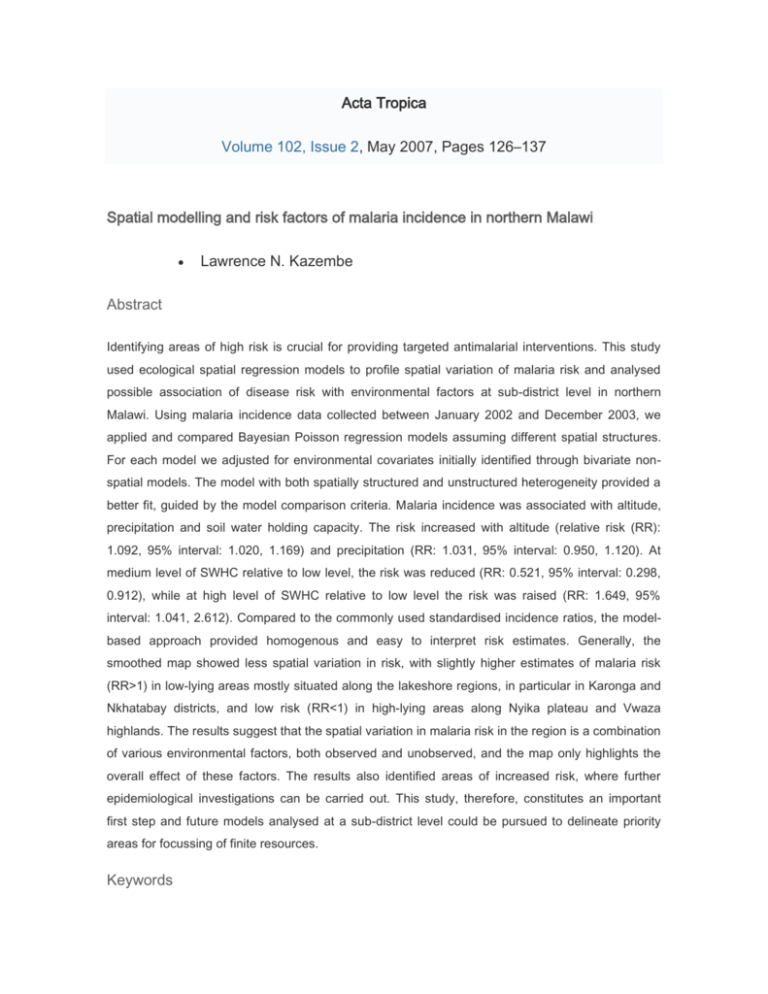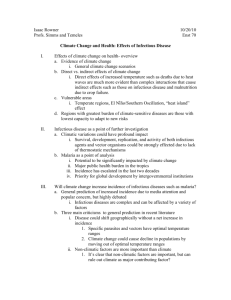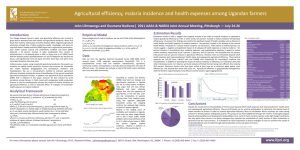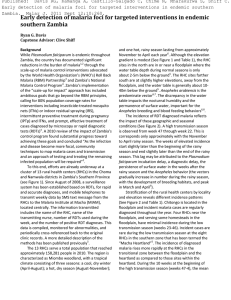May 2007, Pages 126–137 Spatial modelling and risk factors of
advertisement

Acta Tropica Volume 102, Issue 2, May 2007, Pages 126–137 Spatial modelling and risk factors of malaria incidence in northern Malawi Lawrence N. Kazembe Abstract Identifying areas of high risk is crucial for providing targeted antimalarial interventions. This study used ecological spatial regression models to profile spatial variation of malaria risk and analysed possible association of disease risk with environmental factors at sub-district level in northern Malawi. Using malaria incidence data collected between January 2002 and December 2003, we applied and compared Bayesian Poisson regression models assuming different spatial structures. For each model we adjusted for environmental covariates initially identified through bivariate nonspatial models. The model with both spatially structured and unstructured heterogeneity provided a better fit, guided by the model comparison criteria. Malaria incidence was associated with altitude, precipitation and soil water holding capacity. The risk increased with altitude (relative risk (RR): 1.092, 95% interval: 1.020, 1.169) and precipitation (RR: 1.031, 95% interval: 0.950, 1.120). At medium level of SWHC relative to low level, the risk was reduced (RR: 0.521, 95% interval: 0.298, 0.912), while at high level of SWHC relative to low level the risk was raised (RR: 1.649, 95% interval: 1.041, 2.612). Compared to the commonly used standardised incidence ratios, the modelbased approach provided homogenous and easy to interpret risk estimates. Generally, the smoothed map showed less spatial variation in risk, with slightly higher estimates of malaria risk (RR>1) in low-lying areas mostly situated along the lakeshore regions, in particular in Karonga and Nkhatabay districts, and low risk (RR<1) in high-lying areas along Nyika plateau and Vwaza highlands. The results suggest that the spatial variation in malaria risk in the region is a combination of various environmental factors, both observed and unobserved, and the map only highlights the overall effect of these factors. The results also identified areas of increased risk, where further epidemiological investigations can be carried out. This study, therefore, constitutes an important first step and future models analysed at a sub-district level could be pursued to delineate priority areas for focussing of finite resources. Keywords Malaria incidence; Bayesian spatial modelling; Standardised incidence ratio; Relative risk; Under-five children; Northern Malawi











